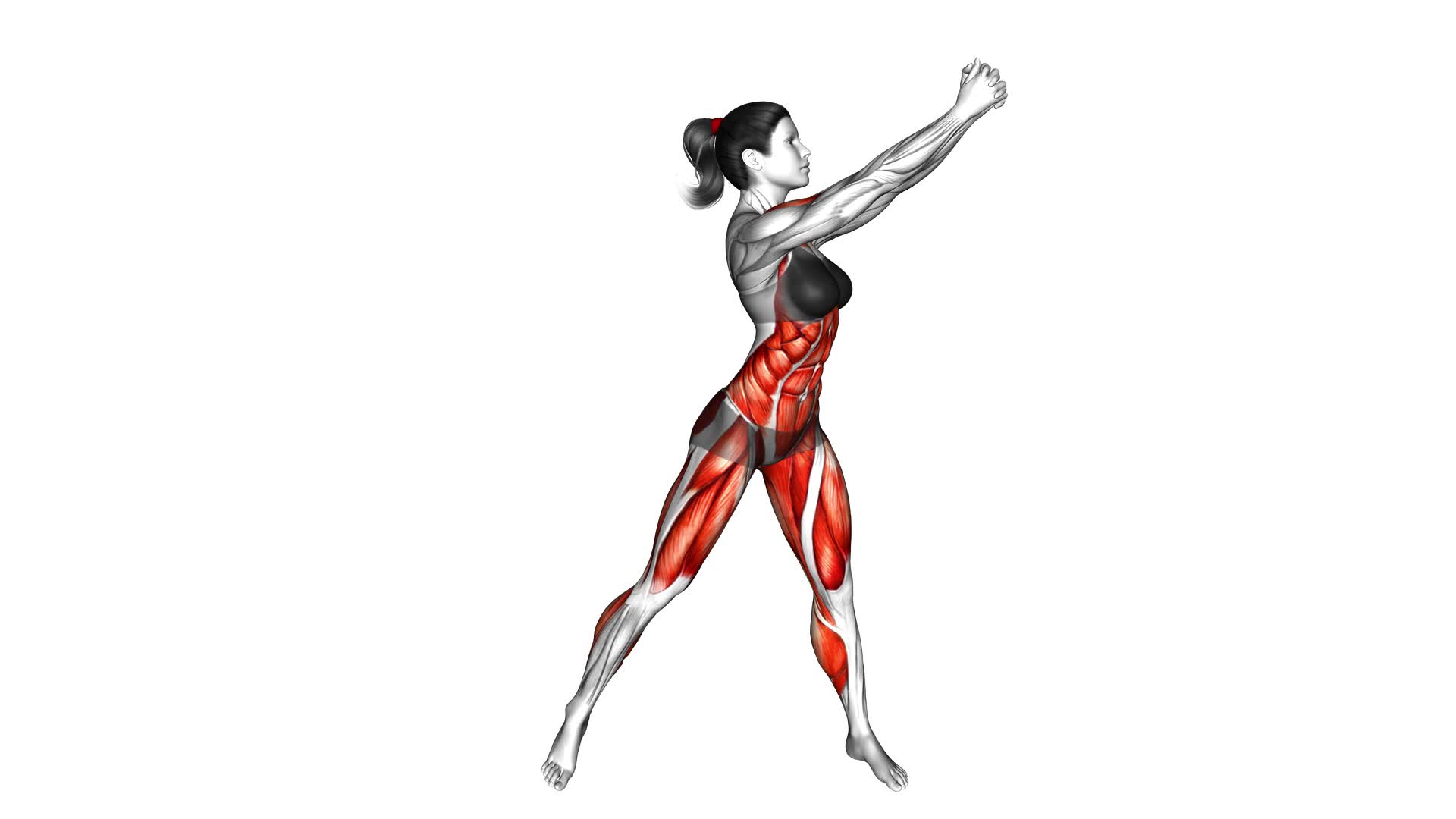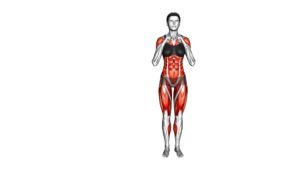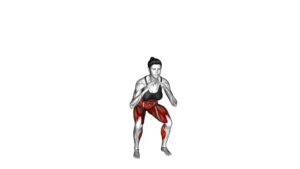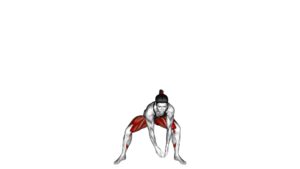Side-up Squat (female) – Video Exercise Guide & Tips

Are you looking for a challenging lower body exercise to add to your workout routine? Look no further than the side-up squat!
Watch This Exercise Video
In this video exercise guide, we'll show you how to properly perform the side-up squat, along with helpful tips and modifications for beginners.
Whether you're a fitness enthusiast or just starting out, this exercise will help you strengthen your legs, glutes, and core.
Get ready to take your fitness to the next level with the side-up squat!
Key Takeaways
- Side-up squat strengthens legs, glutes, and core.
- Maintaining proper form is crucial for maximizing results and avoiding injury.
- Consistency and gradual increase in intensity are key for optimal results.
- Engaging core, aligning knees, and maintaining a neutral spine activates targeted muscles effectively.
Benefits of the Side-up Squat
To maximize your results and target your glutes and inner thighs, perform the Side-up Squat exercise regularly. This exercise offers a multitude of benefits, including proper muscle activation and the opportunity to practice proper breathing techniques.
The Side-up Squat specifically targets the glutes and inner thighs, helping to strengthen and tone these areas. By incorporating this exercise into your routine, you can expect to see improvements in muscle definition and overall lower body strength.
One key aspect of the Side-up Squat is its ability to activate the muscles in the targeted areas. By maintaining proper form and engaging your glutes and inner thighs throughout the exercise, you can ensure that these muscles are being effectively worked. This muscle activation is crucial for achieving the desired results and maximizing the benefits of the exercise.
Additionally, the Side-up Squat provides an opportunity to practice proper breathing techniques. By inhaling deeply as you lower into the squat and exhaling as you rise back up, you can enhance your core stability and overall performance.
Incorporating the Side-up Squat into your fitness routine won't only help you target your glutes and inner thighs, but also improve muscle activation and allow you to practice proper breathing techniques. Keep in mind that consistency is key, so aim to perform this exercise regularly to achieve optimal results.
Proper Form and Technique
Maintain proper form and technique while performing the Side-up Squat to effectively target your glutes and inner thighs and maximize the benefits of this exercise. To ensure knee stability during the Side-up Squat, start by standing with your feet shoulder-width apart. Keep your chest lifted and your core engaged throughout the movement.
Next, shift your weight onto one leg and lift the other leg out to the side, keeping it straight. As you lower into the squat, make sure to keep your knee aligned with your toes. Avoid letting your knee collapse inward, as this can put unnecessary stress on the joint.
To activate your hips, focus on pushing your hips back and down as you squat. This will help engage your glutes and inner thighs. As you come back up, drive through your heel to activate your glutes even more.
Remember to maintain a slow and controlled movement throughout the exercise. This will help you maintain proper form and prevent any potential injuries.
Modifications for Beginners
If you're new to the Side-up Squat exercise, there are a few modifications you can make to ease into the movement and build strength in your glutes and inner thighs. As a beginner, it's important to prioritize safety and gradually increase the intensity of your workouts.
One modification you can try is to perform the exercise without weights. By eliminating the added resistance, you can focus on mastering the form and technique before progressing to using weights.
Additionally, you can decrease the depth of your squat to make it less challenging. Instead of going all the way down into a full squat, you can perform a partial squat where you only lower yourself halfway or until you feel comfortable. Remember to engage your core, keep your chest lifted, and maintain proper alignment throughout the movement.
These modifications will allow you to gradually build strength and confidence in the exercise. Once you feel comfortable with these beginner modifications, you can move on to advanced variations for increased intensity.
Transitioning into advanced variations will help take your workout to the next level and further challenge your muscles.
Advanced Variations for Increased Intensity
To increase the intensity of your Side-up Squat exercise, you can incorporate advanced variations that target your muscles even more effectively. Here are some advanced modifications you can try:
- Incorporating weights: Adding weights to your Side-up Squats can significantly increase the intensity and challenge your muscles even further. You can use dumbbells, kettlebells, or even a barbell to add resistance to your squats. This will engage your muscles more, leading to greater strength and muscle development.
- Single-leg Side-up Squat: Take your Side-up Squat to the next level by performing it on one leg. This variation not only requires more balance and stability but also places additional stress on your muscles, especially your glutes and quads. Be sure to maintain proper form and control throughout the movement.
- Pulse Squats: Instead of performing a full range of motion squat, try incorporating pulse squats. In this variation, you'll squat down halfway and then perform quick pulses up and down. This continuous movement will keep your muscles engaged for a longer duration, increasing the intensity and burning more calories.
Common Mistakes to Avoid
To ensure proper form and prevent injury during the side-up squat, it's important to pay attention to a few key points.
First, make sure your knees stay aligned with your toes throughout the movement to avoid unnecessary strain.
Secondly, distribute your weight evenly between both legs to maintain balance and stability.
Lastly, aim for a full range of motion by squatting low enough so that your thighs are parallel to the ground.
Knee Alignment Tips
Maintain proper knee alignment during the side-up squat exercise by engaging your core and focusing on pushing your knees outward. By doing so, you can prevent knee injuries and ensure effective strengthening of your lower body.
To help you understand the importance of knee alignment, here are some tips to keep in mind:
- Keep your knees in line with your toes: This alignment reduces stress on the knee joint and helps distribute the workload evenly.
- Avoid inward collapsing of the knees: This common mistake can lead to knee pain and instability. By pushing your knees outward, you engage the correct muscles and maintain proper alignment.
- Engage your core: A strong core provides stability and support, allowing you to maintain proper knee alignment throughout the exercise.
Proper Weight Distribution
To ensure proper weight distribution during the side-up squat exercise, focus on evenly distributing your weight between both feet. This is essential for maintaining balance and avoiding any potential mistakes.
When performing the side-up squat, make sure to keep your feet shoulder-width apart and parallel to each other. As you lower into the squat position, keep your weight centered and avoid shifting more weight onto one foot than the other. This can cause imbalance and increase the risk of injury.
Additionally, concentrate on keeping your core engaged and your back straight throughout the movement. By following these weight distribution tips and maintaining balance, you can optimize the effectiveness of the side-up squat exercise while minimizing the risk of strain or injury.
Full Range of Motion
Achieving full range of motion is crucial for maximizing the benefits of the side-up squat exercise and avoiding common mistakes. To help you understand the importance of this, here are some common mistakes to avoid when it comes to full range of motion:
- Not going low enough: Going through the full range of motion means squatting deep enough to engage your muscles fully. If you only go halfway, you won't be maximizing the results of the exercise.
- Rushing through the movement: It's important to control your movements and go through the full range of motion at a steady pace. Rushing can lead to poor form and potential injury.
- Neglecting proper form: Maintaining proper form throughout the exercise is essential for maximizing results. Avoid rounding your back or letting your knees cave in.
Tips for Maximizing Results
To maximize your results with the side-up squat, it's crucial to focus on maintaining proper form throughout the exercise. This means:
- Keeping your back straight
- Keeping your knees aligned with your toes
- Engaging your core muscles
Consistency is key for progress, so aim to incorporate this exercise into your routine regularly for optimal results.
Proper Form Importance
For maximizing results and avoiding injury, maintaining proper form is crucial during the side-up squat exercise. Proper technique ensures that you target the correct muscles and get the most out of your workout.
Here are some important reasons why proper form is essential:
- Injury prevention: Performing the side-up squat with incorrect form can put unnecessary strain on your joints and muscles, increasing the risk of injury. By maintaining proper alignment and technique, you reduce the chance of hurting yourself.
- Muscle activation: Proper form ensures that you engage the targeted muscles effectively. By keeping your core tight, knees aligned, and maintaining a neutral spine, you activate the glutes, quads, and hamstrings properly, maximizing muscle activation and results.
- Balance and stability: Maintaining proper form during the side-up squat helps improve your balance and stability. By keeping your body in the correct position, you enhance your body's ability to control movement and maintain stability, leading to better overall performance.
Consistency for Progress
How can you consistently maximize your results and progress during the side-up squat exercise?
One key tip is to focus on maximizing gains by gradually increasing the intensity of your workouts over time. Start with a weight that challenges you but allows you to maintain proper form. As you get stronger, gradually increase the weight to continue challenging your muscles.
Another important aspect is tracking progress. Keep a workout journal or use a fitness tracking app to record the weight, sets, and reps for each session. This will help you see your progress over time and make necessary adjustments to your routine.
Consistency is crucial, so make sure to stick to a regular workout schedule and give your body enough time to recover between sessions.
Frequently Asked Questions
How Many Calories Does the Side-Up Squat Burn?
The side-up squat can be a great exercise for burning calories and toning your lower body. By incorporating both a squat and a lateral leg lift, this move targets multiple muscle groups, increasing the intensity and calorie burn.
Additionally, the side-up squat helps improve balance, stability, and hip strength.
Can Men Also Perform the Side-Up Squat Exercise?
Yes, men can definitely perform the side-up squat exercise. It's a great addition to men's fitness routines as it targets the lower body and core muscles.
The side-up squat can be modified to suit individual preferences and fitness levels. Variations include adding weights or using a stability ball for an extra challenge.
Incorporating the side-up squat into your workout can help improve strength, stability, and overall fitness.
Are There Any Specific Warm-Up Exercises Recommended Before Doing the Side-Up Squat?
Before performing the side-up squat, it's important to do a dynamic warm-up to prepare your muscles. This will help increase blood flow and flexibility, reducing the risk of injury.
You can try exercises like leg swings, lunges, or jumping jacks to warm up your lower body.
A proper warm-up will also enhance the benefits of the side-up squat, such as strengthening your glutes, quads, and core muscles.
Remember to listen to your body and start with lighter weights before progressing.
Can the Side-Up Squat Help in Toning the Inner Thighs?
The side-up squat is a great exercise for toning your inner thighs. By targeting this specific area, it helps to strengthen and define the muscles in your inner thighs.
This exercise is effective because it engages multiple muscle groups, including your glutes, quads, and hamstrings.
Incorporating the side-up squat into your workout routine can provide you with the benefits of an effective inner thigh workout, helping you to achieve your fitness goals.
How Often Should the Side-Up Squat Be Performed for Best Results?
To get the best results from the side-up squat, it's important to consider the frequency at which you perform it. The frequency of doing this exercise can vary depending on your fitness level and goals.
It's generally recommended to start with 2-3 times a week and gradually increase as you get stronger. Additionally, you can incorporate variations of the side-up squat to target different muscles and keep your workouts interesting.
Remember to listen to your body and adjust the frequency as needed.
Conclusion
In conclusion, the side-up squat is a highly effective exercise that targets the lower body muscles while also engaging the core. By maintaining proper form and technique, beginners can gradually increase their strength and stamina.
For those seeking a challenge, advanced variations can be incorporated to intensify the workout. It's important to avoid common mistakes and follow the tips provided to maximize results.
Incorporating the side-up squat into your fitness routine can lead to improved strength, stability, and overall fitness.

Author
Years ago, the spark of my life’s passion ignited in my mind the moment I stepped into the local gym for the first time. The inaugural bead of perspiration, the initial endeavor, the very first surge of endorphins, and a sense of pride that washed over me post-workout marked the beginning of my deep-seated interest in strength sports, fitness, and sports nutrition. This very curiosity blossomed rapidly into a profound fascination, propelling me to earn a Master’s degree in Physical Education from the Academy of Physical Education in Krakow, followed by a Sports Manager diploma from the Jagiellonian University. My journey of growth led me to gain more specialized qualifications, such as being a certified personal trainer with a focus on sports dietetics, a lifeguard, and an instructor for wellness and corrective gymnastics. Theoretical knowledge paired seamlessly with practical experience, reinforcing my belief that the transformation of individuals under my guidance was also a reflection of my personal growth. This belief holds true even today. Each day, I strive to push the boundaries and explore new realms. These realms gently elevate me to greater heights. The unique combination of passion for my field and the continuous quest for growth fuels my drive to break new ground.



